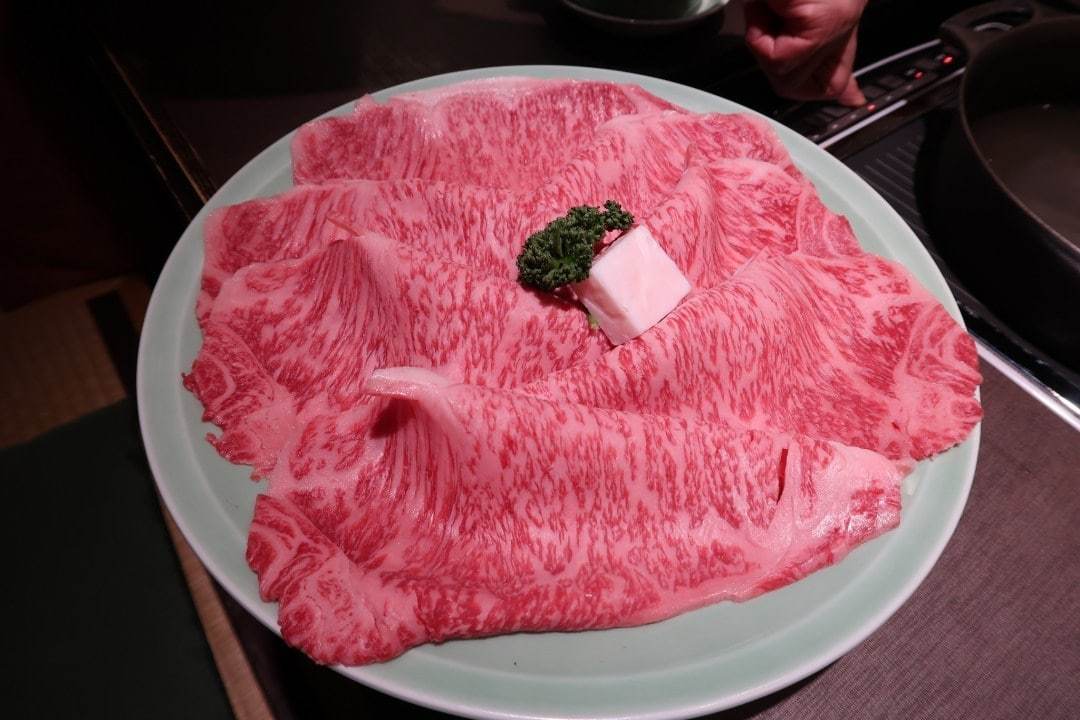
Why Japanese Beef is the Best.
Japan’s famous beef has taken over the world. Hands down, it’s the best beef. Let’s learn about the different types of Japanese beef, how the cattle are different from other countries, and why it is so amazing.
About Japanese Beef & the Differences Between Wagyu, Kobe Beef, and A5.
Wagyu
Any fan of beef will know that Japanese beef, or wagyu, reigns supreme. Wagyu refers to the special Japanese breed of beef cattle. “Wa” means “Japanese” and “gyu” means “cow”.
Wagyu is so popular and legendary that it comes with its fair share of myths like the cows are massaged daily and fed beer. There is slight truth to the massages, though, in that the cattle are brushed to increase blood circulation and to relieve any stress in order for the muscles to loosen for a more tender beef.
Kobe Beef
Before today’s craze with wagyu, it was all about Kobe beef. Kobe beef refers to the cattle and beef from the Kobe region in Japan (much like how Champagne can only come from the Champagne wine region in France). This beef is crazy expensive because only 3,000 cattle qualify and are graded as authentic Kobe beef each year.
It is important to note that Kobe been has been greatly adulterated, especially if you are being sold Kobe beef burgers because the actual meat is far too tender to be used for burgers. Most restaurant kitchens combine domestically raised wagyu and Angus cows.
A5
A5 refers to the highest grading of wagyu. (More on the grading system below.) Currently, the highest-ranking wagyu abroad is the A5 Miyazaki from the Kyushu region. There the cattle are raised in Japan’s oldest olive oil plantation where they feed on pressed, dried olive peels creating beef that’s extra tender.
A5 is all about that incredible marbling, the bright pink color, the firmness, texture, and the quality of the fat. The beef is wondrously tender, butter, and melt-in-your-mouth. This heavenly experience comes from the extreme intramuscular fat which, like jamón ibérico, has unsaturated Omega 3s and 6s.
Japanese beef is not meant to be eaten like thick cuts of western steaks. Because of its marbling, butteriness, richness, and price, the best wagyu cuts are consumed in smaller portions.
About the Japanese System of Raising Cattle
Japanese cows are so valuable that in 2002, one Matsusaka cow was sold for $400,000. On average, Japanese wagyu cattle are worth $30,000 – that’s versus the average American cow valued at $1,500.
Japanese cattle are raised to incredible standards with utmost care. Ultimately, it is their genetics, diet, and environment which create their value and prized meat.
There is a specialized way of caring for the cattle in a low-stress proper environment where they are bred for physical endurance in order to produce intramuscular fat for the marbling.
Japan’s process differs from other countries in that the labor is expensive and extensive due to the detail in care by the farmers. It is interesting to note that cows are raised differently in each region around the country, as such Japan regulates the beef production, resulting in only the best. This protects the value and quality of the meat.
Japan requires all cattle to have an identification system in order to trace every minute detail: the cattle back to its distributor, importer, or exporter, back to its processing plant, back to its breed, back to its parents, and even back to its grandparents. This system ensures that only the cows with the best genetics and environments are kept.
Because of tariffs and quotas for exports, it is difficult and expensive to source real wagyu abroad. In many cases, they are cross-bred as there are only 100% Japanese wagyu cattle in Japan. Outside of the country, they can only be domestically cross-bred.
Raising & Selling Japanese Cows
It all starts with the young cattle from four breeds of wagyu cows which are fed milk by hand by their breeder. They grow up grazing on an open pasture with their special diet for about 700 days (whereas in the U.S. cows are fed for 120 days).
At this point, the cattle are sold at an auction to fattening farms for prices already higher than the value of American cows. Pregnant cows and breeding cattle remain on the open pasture, while the rest are kept in pens for feeding. For the next two years, they feed on fiber and a high-energy concentrate of rice, wheat, and hay three times a day until they are 50% fat and about 700 kilograms. Then, if they qualify, they are auctioned for about $30,000.
How Japanese Beef is Graded
Wagyu is graded by the Japan Meat Grading Association on two main factors: 1) with grades A to C for how much meat can be yielded from the cow, and 2) with a number from 1 to 5 for the overall quality including the quantity of the marbled fat, firmness, color, and texture of the beef.
The higher the grade, the higher the price. And, because of Japan’s high standards, only A3 to A5 is certified to be sold in Japan.
In Japan, when any food is crazy expensive, it means great care was put into its production and it’s more than likely worth the splurge.
Buy your Official JR Pass and Regional Pass!
Stay connected in Japan with Pocket Wifi!
Arrive in style and convenience with Meet & Greet service!
Sign up for my newsletter on the sidebar for blog updates and my travel insider tips! And, check out my vlogs on YouTube!



